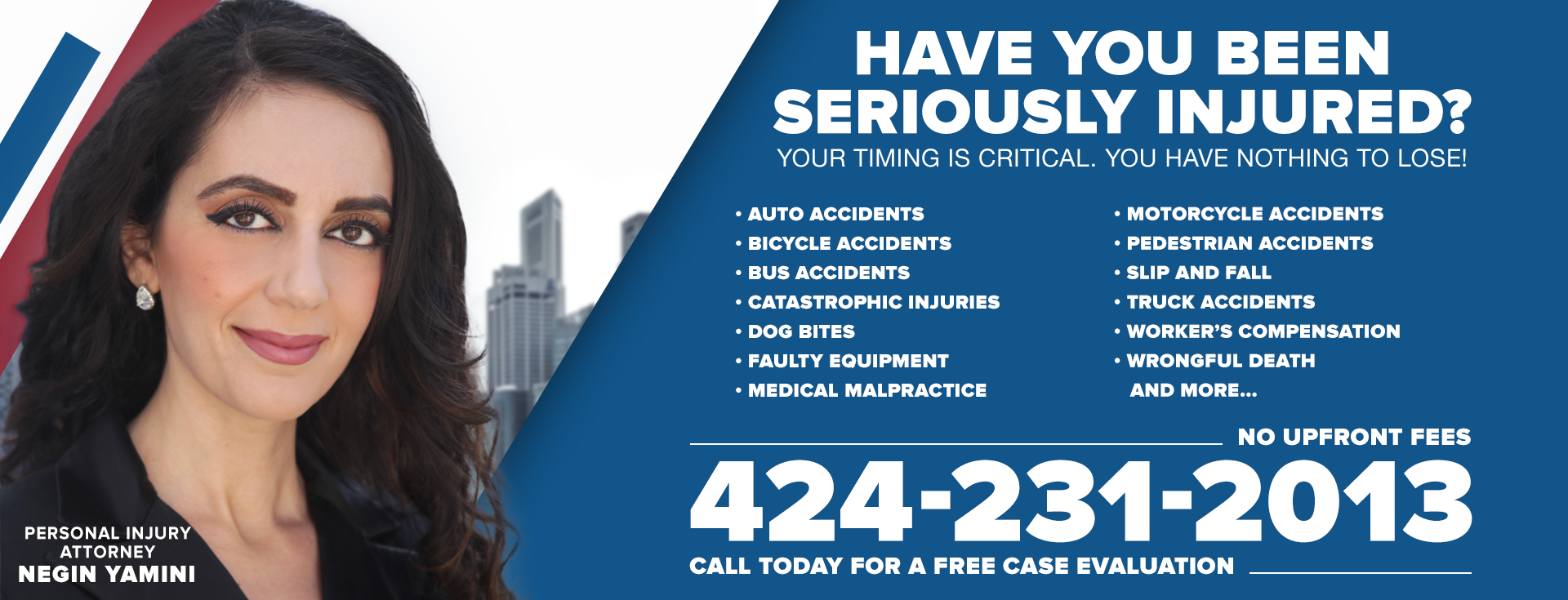Unfortunately, it is common to sustain a neck or back injury in an auto accident. The path to securing fair compensation for these injuries is complex. While victims understandably want an “average” settlement figure, it is not simple. The issue is complex, which requires factoring in the severity of injury, medical costs, and other long-term impacts. Compensation payouts might be in the thousands for minor whiplash injuries to over a million dollars for life-changing injuries to the spine. The following information explains why these outcomes vary so much and what truly shapes the value of your back or neck injury claim.
Understanding Car Accident Settlements
After the discomfort and chaos of a car accident, you are, understandably, eager to know how much you can recover for your injuries, particularly for traumatic back and neck injuries. Most likely, the first thing you will do is look up the average settlement. Understandably, you would want a quick benchmark to have something to work with and to know what your injury claim may be worth.
High-level aggregated settlement data can be a wide-ranging and overarching benchmark, hinting that, not uncommonly, compensation is awarded for these types of injuries and that serious injuries may correlate approximately with higher settlement ranges. However, no “average” will accurately predict your case’s outcome. The “average” settlement is a statistical concept and should not be considered a benchmark for your case.
The average data you analyzed is a small part of a larger, more complex, and highly individualized story. Averages can give a false impression that there is a universal standard when there is none. Plus, many average reports do not have consequential information that affects settlement value. They seldom indicate whether or not lawyers were involved, which matters. When they do, they fail to disclose the totality and cost of medical treatment and particulars of liability.
Similarly, the accident particulars and circumstances are also not disclosed. The various nuances drastically affect the settlement value. Depending on an “average” can either lead to impossible hopes or have you undervalue your rightful claim for your neck or back injuries after a car accident.
So, while averages may fulfill your initial curiosity, they must be quickly followed by a deep dive into the particulars that drive a personal injury settlement.
Common Back and Neck Injuries Sustained in California Car Accidents
Car accidents can easily cause grave neck and back injuries, especially if there is any sudden impact or sudden stop. Injuries range from mild to severe, which could lead to some form of discomfort or disability.
Some of the most prevalent back and neck injuries include:
- Whiplash Associated Disorders (WAD) — This is the most common neck injury from a car accident. It occurs when the head is violently thrown forward and backward, straining muscles, ligaments, and other soft tissues in the neck. You could experience pain and stiffness in your neck, headache, dizziness, poor vision, tiredness, and trouble focusing. Although most people recover fully, some will have persistent pain and aftereffects requiring treatment.
- Herniated or bulging disc — Intervertebral discs cushion the spine. An impact or sudden blow could lead to a:
- A disc bulge, where the disc pushes out of its normal space
- Disc herniation, where the soft inner material ruptures through the outer layer
Cervical herniated discs happen in the neck region and often cause pain and possibly numbness, tingling, and weakness down into the arm and hand (radiculopathy). A lumbar herniated disc happens in the lower back. This condition usually causes sciatica. Sciatica is when you feel pain, numbness, or tingling in the leg. It often travels down the leg to the foot. These injuries can be excruciating and restrict your movement. This could even require surgery.
- Spinal fractures — These are breaks in the spine’s bones, or vertebrae. The severity varies. When compression fractures happen, the body of the vertebra collapses due to severe force. However, in the case of burst fractures, the vertebrae are shattered. Moreover, this could send bony fragments into the spinal canal. This injury can cause severe nerve damage. Fractures of the spine are painful and unstable, and if the spinal cord is affected, they can lead to partial or complete paralysis.
- Sprains and strains — Even though a sprain or strain can be minor, it can still have a significant impact. A sprain happens when you twist or tear a ligament, the tough tissue that connects bones. A strain, on the other hand, is an injury that occurs to a muscle or tendon. Both can cause localized pain, swelling, muscle spasms, and limited range of motion, requiring rest, physical therapy, and pain management.
- Nerve damage or radiculopathy — It occurs when a nerve root is compressed or irritated in the spinal column. This condition occurs when a nerve is compressed or irritated where it exits your spine. Symptoms often include sciatica. Damage to the sciatic nerve can lead to pain, tingling, numbness, or weakness in the lower back, buttocks, and leg. A nerve in your spine can become pinched and cause pain in your back and other areas. Nerve damage can limit your ability to move and function and your quality of life. In some cases, it may lead to chronic neuropathic pain.
Seek a medical diagnosis for your injuries as soon as possible, along with supporting documentation. Taking too long to seek medical attention can hurt your health and claim. All diagnoses, treatments, or follow-ups will create the medical evidence for any subsequent legal claim.
Key Factors That Heavily Influence Your Back and Neck Injury Settlement Amount
The real value of your back or neck injury claim is affected by many different and related factors. It is not just a simple average value. Insurance adjusters and sometimes the courts will analyze these items to determine a fair and full amount of compensation.
The factors that impact your back and neck injury settlement include:
Severity and Permanency of Injuries
The most important factors are the severity and permanence of your injuries, and it involves not just the diagnosis but the long-term prognosis. Documents, including notes from your doctor or medical professional, imaging reports like X-rays, MRIs, CT scans, specialist reports, and surgical reports, serve as unbiased proof of your injuries. They form the documented medical evidence that substantiates your claim.
The long-term prognosis is crucial. That is: Will you fully recover, or will you face permanent limitations, chronic pain, or disability? Usually, higher settlements are awarded when there is a poor long-term prognosis. Any future care that you may need, including physical therapy, medication, braces, a wheelchair or other assistive device, or future surgery, directly impacts the value of your claim.
Total Medical Expenses (Past and Future)
Medical expenses are economic damages that can be quantified. It will consider all costs related to your medical treatment. This includes all your past medical bills from your:
- Emergency room visit
- Hospital stay
- Doctor appointments
- Visits to specialists
- Diagnostic testing
- Physical therapy
- Chiropractic care
- Medication
Apart from immediate expenses, it is also crucial to have a projection of future medical bills. These might include ongoing treatments, future surgeries, rehabilitation, long-term care, or special equipment. Expert medical testimony is often needed to establish this prediction.
Lost Wages and Loss of Earning Capacity
If you cannot work due to your injury or your ability to earn is affected in the future, you are entitled to compensation for these damages. The loss of wages includes any type of income that you lost after being unable to work due to your injuries.
The loss of earning capacity can be even worse if you cannot return to your job or work at the same capacity. This is a permanent reduction in your future income potential. This often needs vocational and economic expert analysis to measure.
Pain and Suffering
Pain and suffering are among the non-economic damages you can pursue. Non-economic damages compensate you for the intangible losses you suffer due to your injury. While it is a subjective element, it is important in every personal injury claim. It includes:
- Physical suffering
- Pain and discomfort felt because of the injury and its treatment
- Anxiety
- Depression
- Fear
- PTSD
- Other forms of emotional distress
- Mental anguish, which refers to the overall psychological toll and suffering caused by the injury and its effects
Typically, these damages are calculated using a multiplier or per diem method (both are discussed below).
Impact on Your Daily Life
Beyond the medical bills and lost wages, the extent to which the injury has impacted your quality of life will be considered. This includes your inability to perform daily tasks, including difficulty with self-care, doing household chores, or running errands. These damages also help you care for your family, like children, elderly parents, and other dependents.
Moreover, it also considers the loss of involvement in hobbies, such as not being able to:
- Play sports
- Engage in the arts
- Pursue any of your other personal interests
Liability and Negligence
How clear the fault in the accident is will affect the settlement. Your claim could be substantial if there is clear evidence of the other driver's negligence. However, disputed liability will complicate the claim and could lower your settlement amount or require you to go to trial.
California uses a pure comparative negligence rule, meaning that plaintiffs can recover damages even if they are partially at fault. It allows you to recover damages if you are injured, even if you were partially at fault. However, the value of damages you can recover will be reduced by the percentage the jury assigns to you as your portion of fault. For example, if you were 20% at fault for an accident, your total damages will be reduced by 20%.
Insurance Policy Limits
You are entitled to recover damages under your insurance policy, even if the other party is found liable. It could be challenging to recover the full damages if your damages exceed their policy coverage, unless the at-fault driver has significant personal assets.
Your uninsured/underinsured motorist (UM/UIM) coverage can often be helpful in this situation. It provides another avenue of recovery if the at-fault driver lacks insurance or if the limits of that policy are insufficient to pay for your damages.
Determining the Base Value of a Claim
At its heart, your potential settlement boils down to two main components: economic and non-economic damages.
Economic damages refer to damages with a definite dollar value. This includes:
- All your medical bills. This is everything from the ambulance, emergency room, and physical therapy to specialists, prescriptions, and whatever medical care your doctors expect you to receive later
- Your lost income, including wages you have already missed, along with the capacity to earn in the future if you do not return to your job or work
- Property damage and other out-of-pocket expenses also fall under this category
Conversely, your subjective damages, like your pain and suffering, emotional distress, loss of enjoyment of life, and loss of consortium for your spouse, are classified as non-economic damages. There are typically two primary methods to estimate these.
The most common accident valuation method used is the multiplier method. That is when a figure is usually between 1.5 and 5. However, it is often higher if the injury is severe and is applied to your total economic damages.
Another method that may be used, but is less common, is the per diem method. In this method, the dollar amount is assigned for each day you suffer from pain and suffering from the date of the accident until you reach maximum medical improvement. This daily rate could be tied to daily wage loss, though it is usually more applicable to minor or short-term injuries.
After calculating these essential damages, the road to your final settlement is a process that largely depends on negotiation and, when necessary, the court system. When negotiating with the insurance provider, the end amount is purely negotiable. Your calculated total for economic and non-economic damages is your demand starting point. Ultimately, the insurer’s counteroffer, the strength of the evidence you present, and the legal precedent will determine the figure reached in settlement negotiations. This back-and-forth is a direct exchange, driven by what the insurer believes they may have to pay if the matter went to trial versus the cost of settling now.
If you cannot negotiate a fair offer, you might have to file a lawsuit and take your case to trial. In this scenario, the final amount is no longer a negotiated amount but a jury-rendered decision. You will present all your evidence for economic and non-economic damages, and the jury will determine the exact amount based on the facts. Besides, juries can award punitive damages in rare cases where the wrongdoer’s behavior was particularly egregious, like drunk driving or extreme recklessness. These damages punish the defendant and deter others from similar behavior, as opposed to compensatory damages. This often leads to a much higher payout.
Whether you negotiate with an insurer or present your case to a jury, your final settlement value is calculated using your damages. However, your leverage in negotiations and in front of a jury will determine the final payout for your back and neck injuries.
How Insurance Companies Respond to Claims for Back and Neck Injuries
After a car accident that has you suffering from painful back and neck injuries, you will soon face the insurance company, whose primary goal is to pay out as little as possible. Insurance adjusters are professionals trained to achieve this goal through various means.
Insurance companies often extend a lowball settlement shortly after the accident. They hope to settle the claim before you understand the full implications of an injury to your back or neck. They might also fight back against the severity of your injuries, claiming that they existed beforehand or were not caused by the accident. Furthermore, they could ask for excessive, often irrelevant, information to delay and dissuade you. They also downplay the pain and other sufferings. These non-economic damages are harder to prove and quantify.
When speaking to an insurance adjuster about a back or neck injury, it is best to talk to a personal injury lawyer before giving a recorded statement. The insurance adjuster could record your statement, which they can later use against you to devalue your claim. They may ask you questions that steer you in a particular direction. They may also try to get you to admit fault or downplay your pain. This could seriously hurt your settlement amount.
The first offers you receive for your back and neck injuries are almost always insufficient. This is because the full impact of these injuries, including any future care or therapy needed, plus lost wage capacities, is not entirely evident. Insurance companies know this well. They do this in the short run to take advantage of your immediate need for finances and your lack of in-depth understanding of the medical situation to offer you a settlement, which does not reflect your actual losses.
Navigating the Car Accident Claim Process for Your Back and Neck Injuries
To handle the car accident claim process related to a complex back or neck injury, you need to take a series of steps, namely:
- Seek medical care immediately, even if you think your injuries are minor. Some of the worst back and neck injuries have symptoms that are not immediately apparent.
- File a report with the police and take as much evidence from the accident as possible. For instance, obtain photos, contact information of witnesses, and the other driver’s insurance details.
- Report the claim to your insurance company and the at-fault party’s insurance company. In this insurance company investigation phase, they will collect all the medical records for those involved, witness statements, and more. They may also call in accident reconstruction experts to assist them in proving fault and the amount.
Your attorney will prepare and send a demand letter once enough information is obtained. The accident report, the extent of your back or neck injury, a complete list of damages (both economic and non-economic), and a settlement demand letter are all covered in this critical document. This letter is the starting point for negotiations, as this is when you start going back and forth with the insurance adjuster.
California's time limit (statute of limitations) for filing a personal injury lawsuit is typically two years after the injury or the injury's discovery. If you miss that deadline, you lose the right to compensation for your injury. If your attorney cannot agree on a fair settlement, the situation may turn to mediation, arbitration, or, as a last resort, court litigation.
Engage a Personal Injury Attorney Near Me
There is no average settlement, as each case has unique complexities. However, in general, car accident settlements for back and neck injuries range from tens of thousands to over a million dollars, depending heavily on severity, medical costs, and long-term impact. Do not let insurance companies undervalue your suffering. If you suffer a back or neck injury from a car accident, contact the Los Angeles Personal Injury Attorney at 424-231-2013 for your free consultation. We will fight to get you the maximum possible compensation.
























